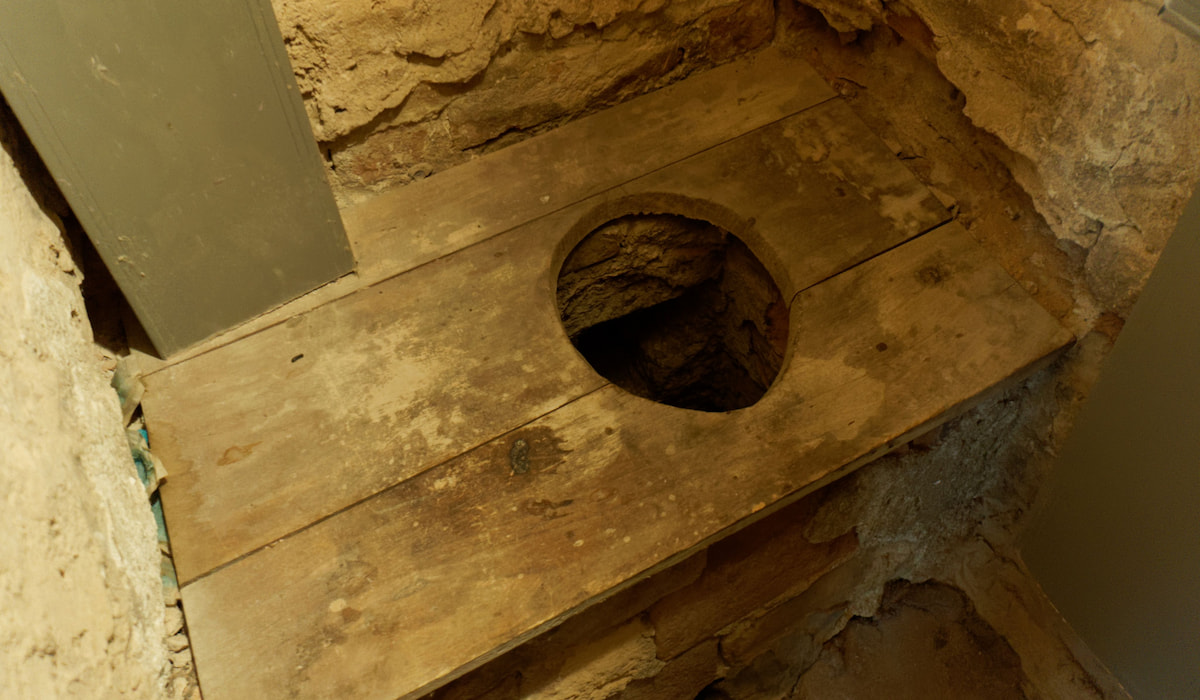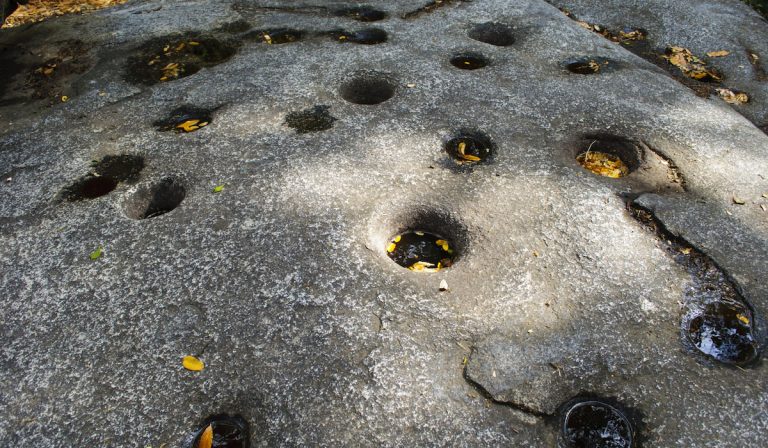13 Medieval Toilet Habits Explained
Based on how they lived, medieval people are always described as naturally wild. Well, it is about to get wilder as we explore how the bathroom has evolved over the centuries!
You can laugh about the medieval people all you want because today, we see ourselves as efficient, civilized, and forward-thinking. However, people in the medieval days only did what they had to do to survive those times. They always had a couple of good ideas that sometimes worked in their favor and expectations while some others didn’t.

In this article, I have prepared a few medieval toilet practices that will make you realize and appreciate how far the toilet and generally, the bathroom, have evolved over the years. Let’s dig in right away.
Disclaimer! You might want to freshen up a bit, eat, and maybe visit the bathroom before reading this.
What Was Unique About the Medieval Toilets?
Names
Medieval toilets were referred to using euphemisms that were often, if not always, understood by the majority or at least the other person in the conversation. The most common names included the “privy,” ”privy chamber,” or “garderobe.”
Garderobe was coined from French where it initially meant a small chamber, room, or cupboard space that was significantly small. Taking this analogy to a castle where space was at the extreme premium, there would never be another spot targeted by the word “garderobe” if not for the little room designated as toilets.
Other names used to refer to the toilet included the “Golden Tower,” “gong,” “drought,” “siege-house,” or “the necessarium.”
Toilet Interiors
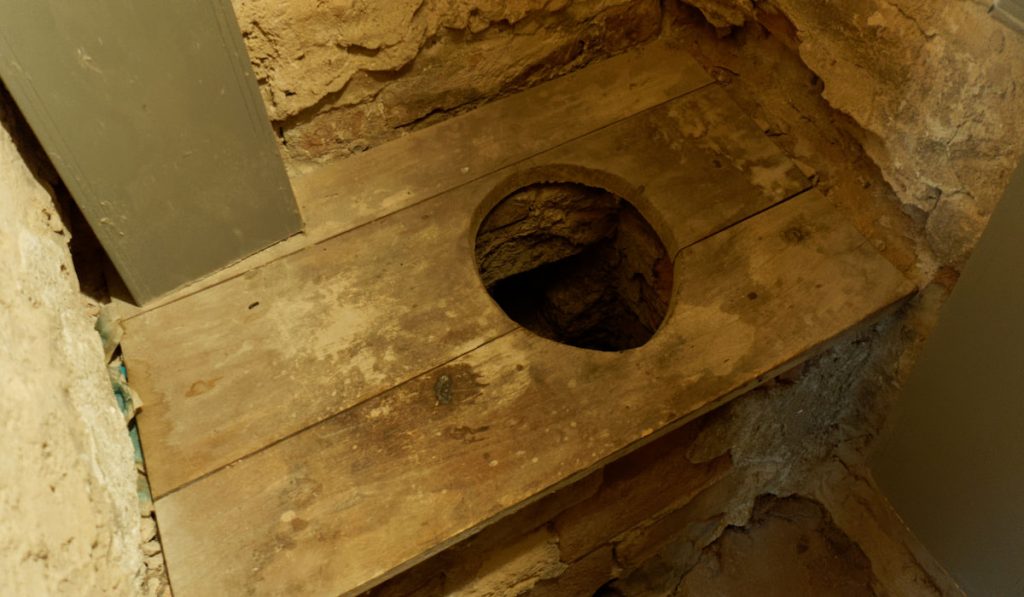
Within buildings, toilets were fixed in recessed chambers within walls, with short narrow passageways like alleys that always led to them. However, not all toilets had the luxury of being fitted with a wooden door.
Sometimes, these passageways would also entail a right turn for more privacy in the toilet. It was also common to find pairs of toilets separated by walls that would share the same waste chutes. Wooden benches formed the seating areas, and they covered the shaft-holes that might be an irregular or rectangular shape in the masonry.
The corners of castle great halls would hold the toilets that most people attending feasts and banquets would use. However, some individuals had the privilege of having their private bathrooms, such as royalty, the castle’s lord and family, and priests. Nevertheless, although they had their private privies, they still had to use toilet buckets, otherwise known as chamber pots, like everyone else.
In some castles, toilets were fitted with small windows that were never shut, to maximize fresh air in the space. The floors were also sprinkled with flowers and aromatic herbs to keep away vermin and insects.
The interior walls were also smeared or whitewashed with a lime-plaster coating that not only helped maximize the light from the small window but also helped kill off any bacteria.
Back then, toilets were rarely cleaned. A good wash would often entail a simple bucket of water splashed on the floor down the shaft or the water from the gutters into the toilets in case of rain.
Although they tried as much to keep the toilets clean, still, the medieval castle toilets stank so potently that people often used to hang their clothing around the toilets because the heavy pungent smell of ammonia killed mites on the clothes. Yes, mites!!
Urinals
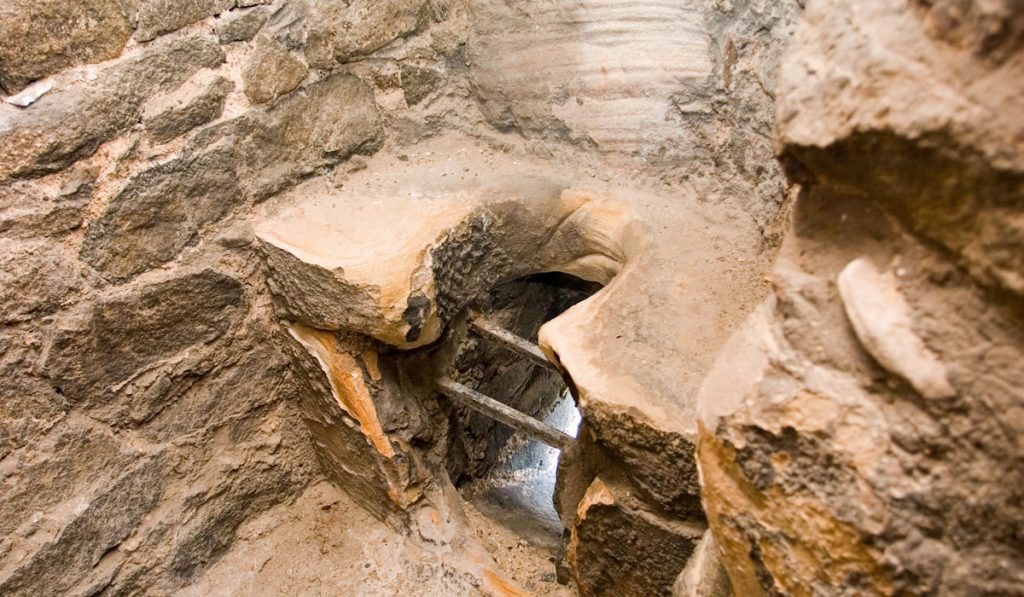
Urinals were fit into tower walls in castles so that guards wouldn’t have to leave their posts for too long for maximum security. However, just like the toilets, the urinals were rarely cleaned, and often had a stench of ammonia.
Although people always shared bathrooms regardless of gender, castles later on adopted private sanitariums for separate genders as evidenced by toilets close to urinals but in separate rooms.
Chamber Pots
Away from the castles, things were different out in the medieval streets. People lacked proper toilets and guess where people threw their waste: yes, right in the streets.
Chamber pots were used to collect human waste from their homes overnight, and when they were done, the contents of the pot would be emptied over the balcony or out through the window, often accompanied by the words “Garde loo!” This is French for “watch out for the waters.”
This was initially a Roman practice that often left the streets stinking and even at times rendered them impassable. However, special staff called muck-rackers were often hired to help clear the streets and make them passable.
Public Bathing
Public bathing was a common thing during medieval times. In fact, people were not just bathing, but they shared water. They used firewood to boil water for bathing, then poured the hot water into a bathtub where it would be shared by many to take baths.
Nosebags
In the streets, the stench of waste was often too much, and people had to come up with a way to cope with the foul smell out in the streets. For this, nose-bags came into existence, whereby people would fill them with fragrant flowers and aromatic herbs to help them fend off the smell of the stinking streets. They might not have always had the nose-bags on, but they were always nearby for just when things get messy.
Bench Toilets
In the medieval Roman Empire, Romans had public toilets made of stone benches with holes carved in the tops. These were often found in enclosures in the open, but the individual toilets were in random points within the enclosure. You would even have multiple Romans sitting close to each other, comfortably going about business with no privacy.
Interestingly, people often held meaningful conversations and even settled and sealed deals with a shake of a hand while sitting on the toilet.
Toilet Paper Was Unheard Of
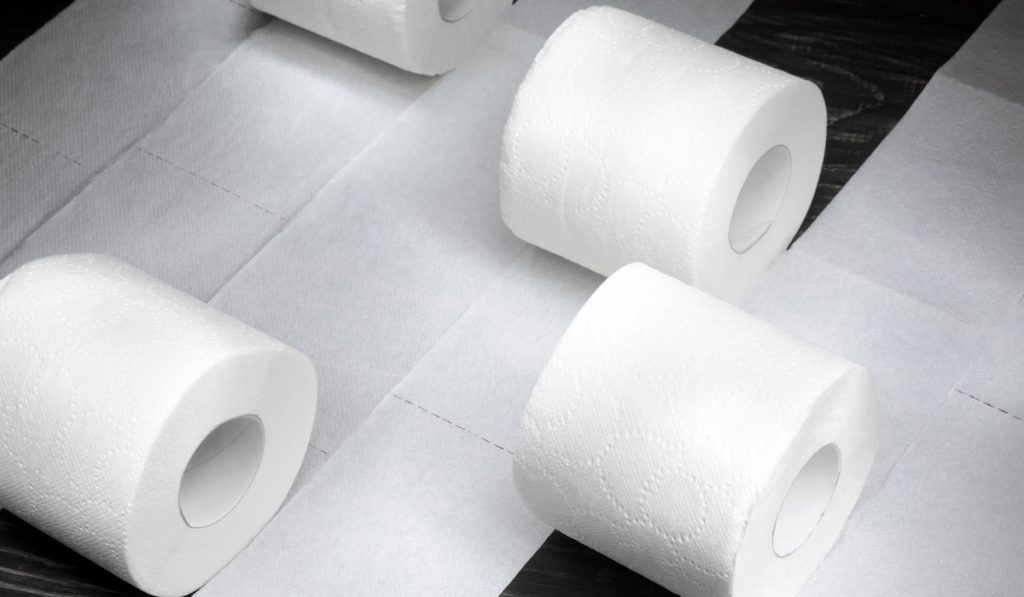
This is getting a little tricky, right? If they didn’t have toilet paper, what did they use instead? Well, brace yourself for this. Back then, people used moss, leaves, hay, or a rag.
If you were lucky enough to be from royalty or could afford it, a lamb’s wool would be at your disposal in place of toilet paper. However, most could not afford this.
Toilet hay is even recounted in history by Jocelin de Brakelond, a 12thcentury English monk who recounts a time when fire almost broke out in the Abbey of Bury St. Edmonds because a candle was left burning close to toilet hay in one of the castle’s sanitariums.
People Didn’t Usually Wash Their Hands

How many times do you wash your hands in a day, not to mention before eating? Well, people in medieval times rarely washed their hands, even before eating.
Washbasins were often situated at a distance from the toilets or dining tables, and it didn’t help that forks and spoons were not that abundant during those times, so people had to eat with their bare hands without washing them.
Washing and Bathing Were Infrequent
As aforementioned, it would always take a great deal of effort to fetch and boil water for bathing, which made this an infrequent thing to do. As it is known, the wealthy took a bath every other once in a while, maybe once or twice a month.
However, if you were poor, you would be lucky to even take a bath 4 times a year. Remember, bathtubs were for the public, and everyone was allowed to join, and this discouraged most people.
If you had a private bathtub, it would mean heating gallons of water to attain the needed amount to wash up in warm water. However, you still had to pour out the water after use, which seemed like a great waste for most people.
People often wanted to take a bath, and if given a chance, they would do it daily, but it was just not possible. Bathing was so rare that an entire town had maybe a maximum of two bathhouses, and couples would even go there to celebrate taking a bath with lots of meals, pastries, and even beds around the bathhouse.
Urine Was Used for Doing Laundry
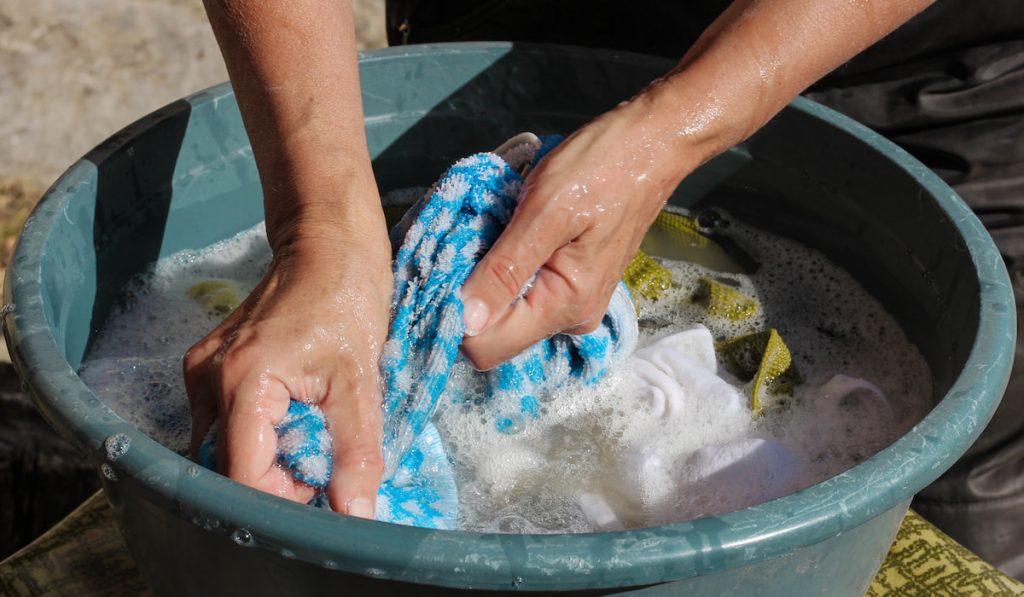
In medieval times, Romans believed that a concoction of ashes and urine would remove stains on their garments. How did they discover this and did it work? I don’t know. We may never know.
Castles Were Surrounded by Waste
‘Garderobes’, as we know it, extended outside the walls of castles, and had openings at the bottom that emptied the waste into the moat that surrounded the castles. Others claim that this was a successful defense mechanism that always greeted unwanted visitors. Either way, this was nasty and smelly.
Master of the Chamber
In medieval times, kings had personal assistants dedicated to assisting their masters in the bathroom. Such an assistant was called the Master of the Chamber. This was a highly respected position, and even the Master of the Chamber was referred to with high regard as one of the most loyal and trusted servants of the king. Of course, they helped the kings wipe their bottoms when they were done.
Conclusion
Aren’t you lucky to live in the 21st century? So many things have always baffled us about how the people lived their way through medieval times, but not as astonishing as the ancient toilet habits. Remember to keep your hygiene in mind now that you have an idea about how far toilets have come.
Resources
- https://www.tradewindsimports.com/blog/facts-about-medieval-bathrooms/
- https://www.worldhistory.org/image/8862/medieval-castle-latrine/
- https://culturacolectiva.com/history/gross-strange-medieval-practices-hygiene-medical/
- https://www.healthyway.com/content/medieval-hygiene-practices-of-the-middle-ages/
- https://en.wikipedia.org/wiki/Toilet_History_Museum
- https://www.thetalko.com/15-medieval-hygiene-practices-that-will-make-you-weak/

